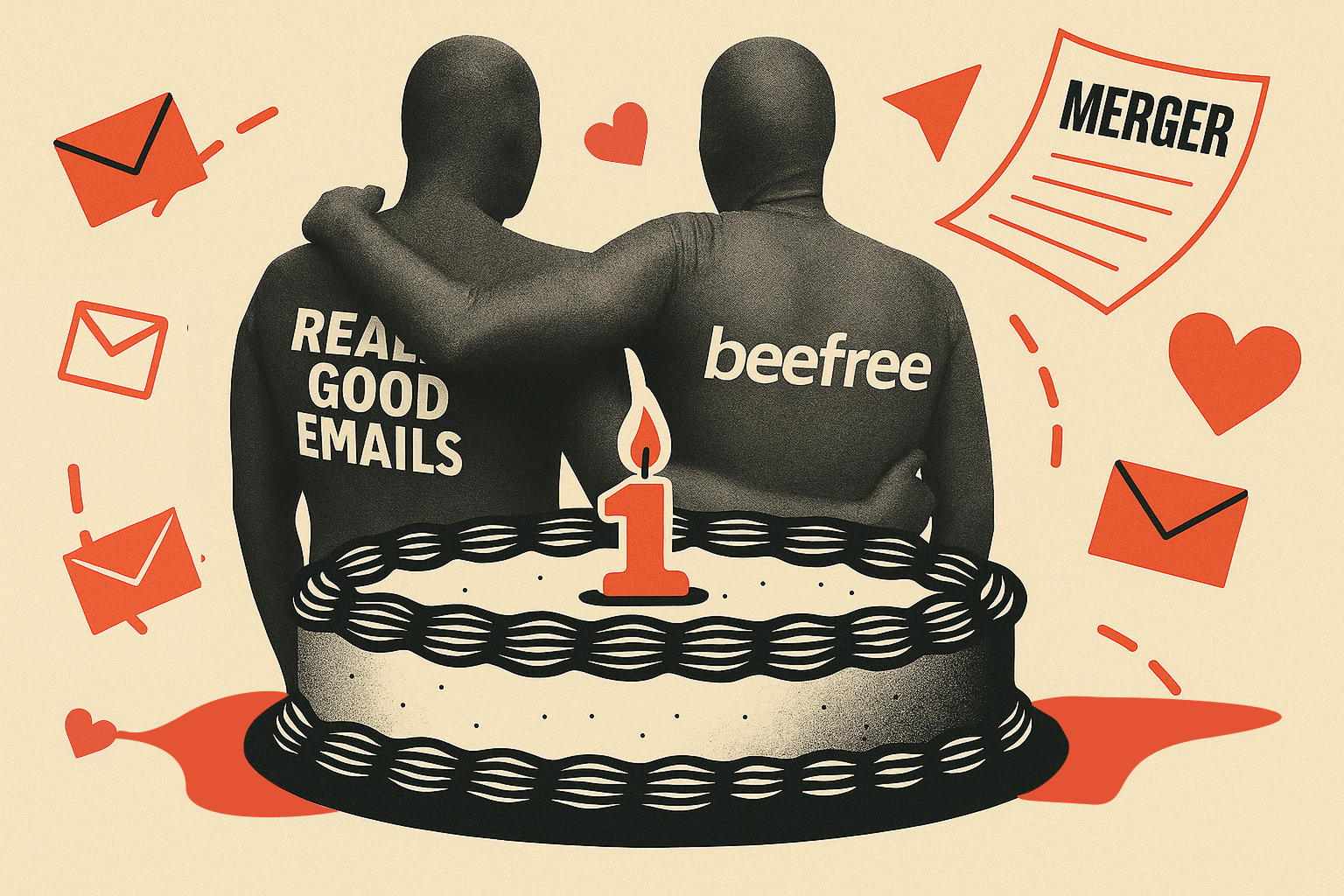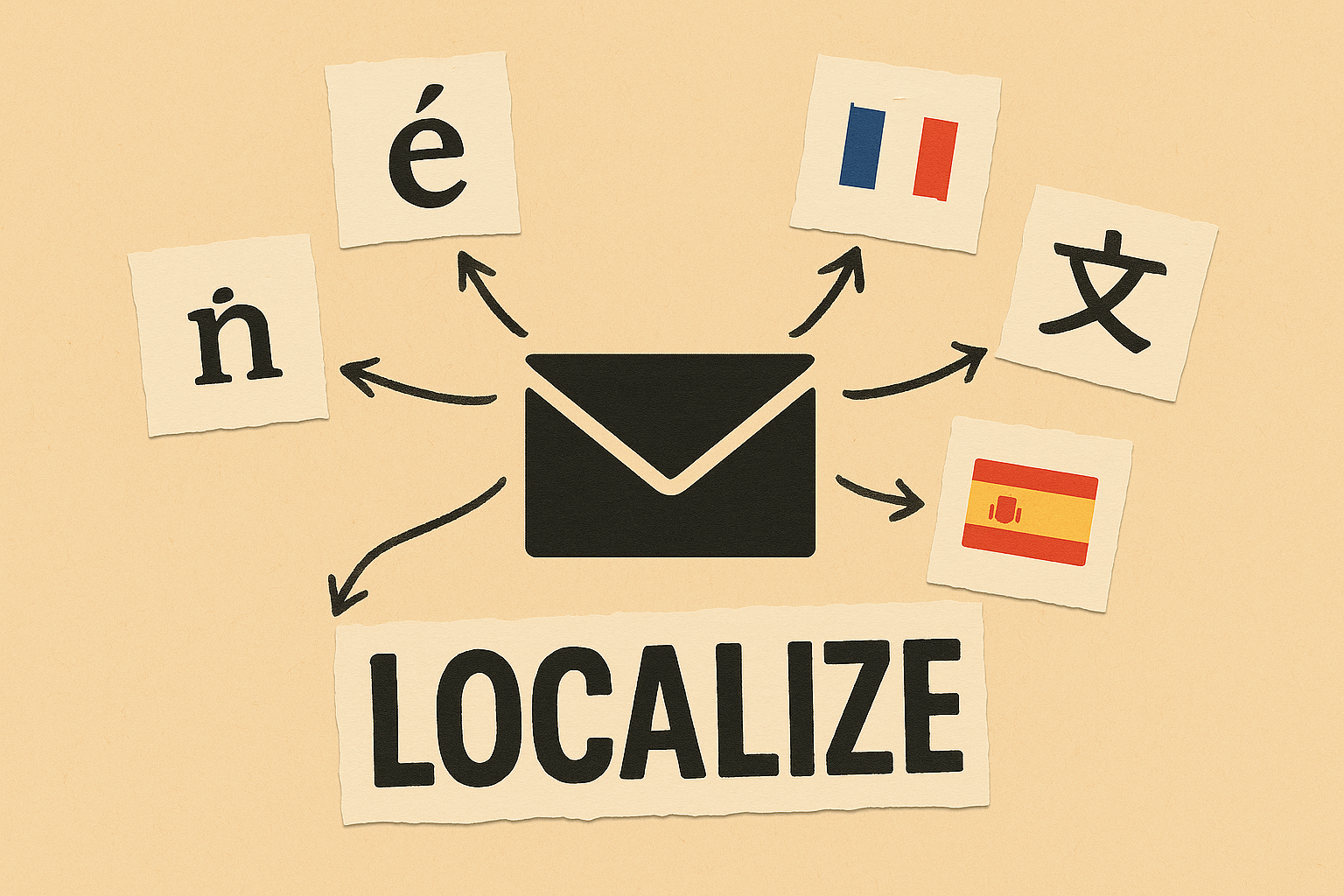Why localization matters more than ever
Melting pot is no longer a phrase which is applicable only to the US. With the amount of turbulence in the world in the last 20 years, people have moved across countries and continents in vast numbers. For email marketers, that means that the time to embrace multilingual emails has come. “Do I really have to?” you may ask. Well, do we really need 10 different Taylors? I mean they all sing about broken hearts anyway, right? The Swifite in me just had to tie in this reference.
Unlike Taylor’s musical eras, where moods change from Fearless optimism to Reputation-era grit, your audience’s language preferences tend to stay consistent. That’s great news for email marketers: once you know someone’s preferred language, you can build long-term personalization around it.
What the numbers say: acase for multilingual messaging
While Taylor Swift references might win over hearts, they won’t win over leadership. To get buy-in for localization, we need hard data. Let’s look at the numbers. Consider the United States, where nearly 22% of residents speak a language other than English at home, doubling the proportion from four decades ago. That number changes from state to state with California hitting 44% of residents. That’s nearly half of the state’s population that would probably prefer to read something in their inbox in a language other than English.
In Canada, the linguistic landscape is equally diverse, with over 43% of the population’s mother tongue being a language other than English. French notoriously is the mother tongue for 20.2% of the population.
What does this mean for email marketers? If your message isn’t localized, you’re potentially missing out on connecting with nearly a quarter of your audience.
Localization: the highest form of personalization
It’s no secret that personalized emails significantly outperform generic campaigns. According to Experian Marketing Services, personalized emails generate six times higher transaction rates and revenue per email compared to non-personalized messages. This notable improvement underscores a universal truth: people are more likely to engage with content that resonates on a personal level and adding a marker for their first name is definitely not enough.
Localizing emails, tailoring content to a recipient's language, region, cultural context, and local preferences represents a high-level form of personalization. Though it demands more effort and resources, the potential outcome is profound: higher open and click rates, deeper engagement, stronger brand affinity, and ultimately, better conversion. The measurable gains make localization a high-impact strategy worth investing in.
The case is clear: localization can deliver results. But how do you actually make it happen with limited time and resources?
Making the case for leadership
Before I can prioritize localizing emails amid the endless to-dos at work, I need to convince leadership it’s worth the effort. That starts with a clear, compelling case for the benefits. If you’re a global company like MacPaw, where I sent my first personalized emails, it’s an easier sell. Each language segment is sizable enough to justify the investment (for context, also watch Rob Gaer's presentation at Unspam about localizing emails). But if your product is limited to just one country, you’ll need to dig deeper. Pull relevant stats from this article, and supplement them with industry-specific data to build your case. Keep it short, sweet, and results-driven—because that’s what gets buy-in.
Start simple: one data point is all you need
Another major advantage? You only need one data point to get started: language spoken. Unlike behavior-based personalization, which requires complex tracking and segmentation, localization is straightforward. It’s a low-effort, high-impact move with less reliance on IT, fewer privacy hurdles, and no need to decode user behavior patterns. Even better, the audience size is already known so you provide the number of users per language or region, making it easy to calculate potential ROI. Plus, localized emails aren’t just about better engagement; they can also serve as a stepping stone into new markets. If international expansion is on the roadmap, email localization offers a lightweight way to test the waters with minimal risk and maximum learning. Let’s review:
- Higher engagement and conversions – Personalized, localized content resonates more deeply.
- Only one data point needed – Language spoken is enough to start.
- Minimal IT dependency – No need for complex behavior tracking or deep integrations.
- Clear audience sizing – Use existing language/region data to project business impact.
- Supports market expansion – An easy way to test and warm up new markets.
- Stronger brand connection – Shows respect for cultural context and local norms.
You’ve got the go-ahead and even some additional budget for the upcoming translations. Now what?
Getting started: the three-step process
Localizing emails basically gets down to three steps:
- Finalize your source language template
- Get the translation
- Add it into template and tweak it accordingly
You may be feeling like this sounds too good to be true and you are right. Let’s just start with some simple math. Let’s say you have a campaign that you plan to personalize for three different audience segments. Imagine you’re ready to start localizing for five languages. Now, instead of 3 emails, you have 15. What if you want to send a follow-up email? That’s 30 email templates right there.
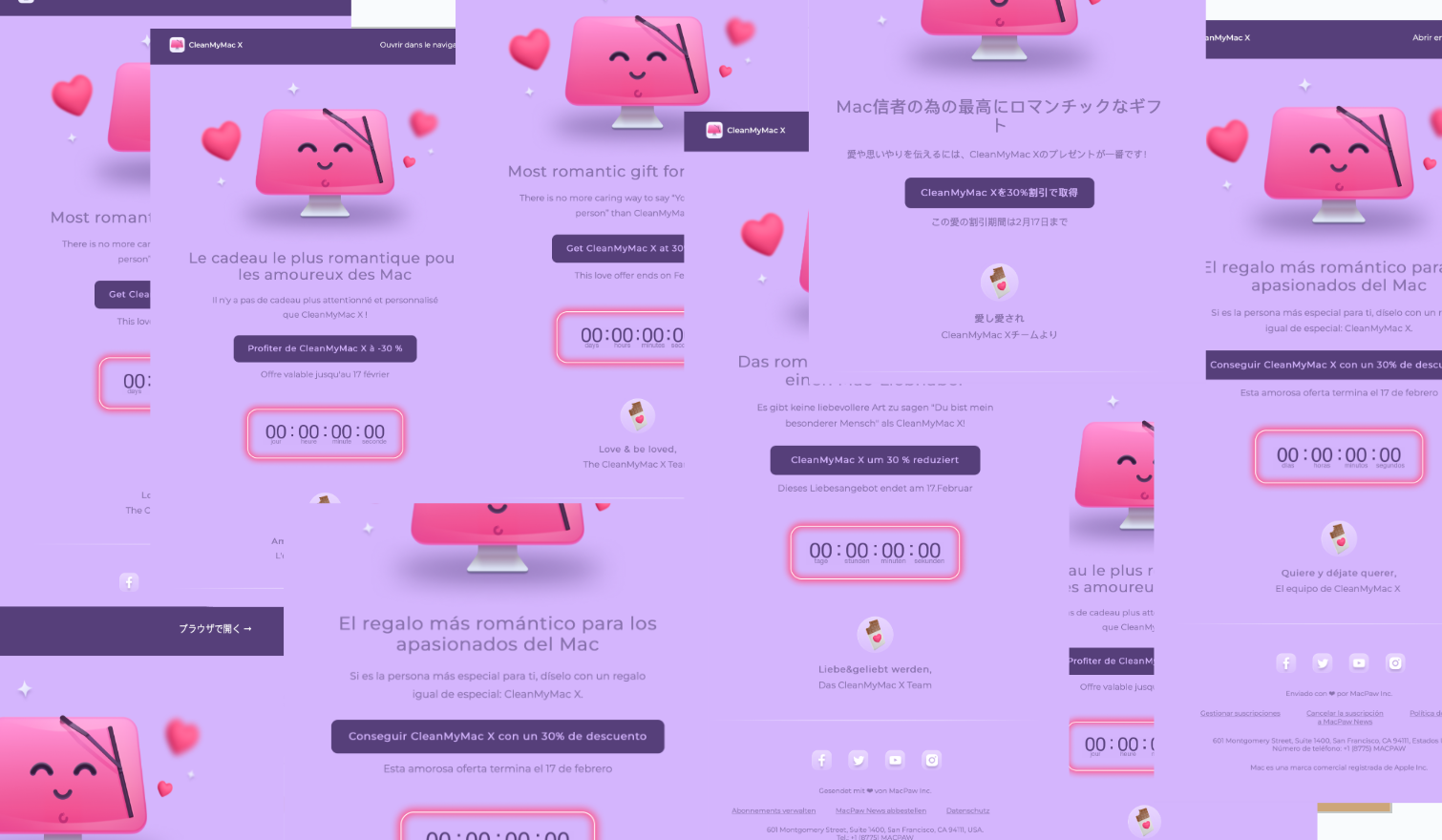
Feeling overwhelmed? That’s completely normal. But here’s the good news: you don’t need to localize everything at once. Start with just one language, doubling your workload instead of tripling or more.
Still overwhelmed? Don’t send the follow-up. Or even just send it to one segment. The most important thing is to try properly. With the results of even a single campaign localization, you’ll be able to quickly see if this is worth it for your team/product/audience.
Let’s dive into the details with a few options for how to keep it simple when needed.
Step 1: Finalize your source language (English?) template
Start with a strong foundation. Make sure your English version is well-written, visually polished, and clearly communicates your message. Localization can’t fix a weak email. This step includes all the sub-steps you can think of on the road to a perfect email: lock in copy and visuals, add alt text, include proper heading structure, test on multiple devices or using a testing tool… Everything you can think of should be done at this stage. Any changes made later may require re-translation and re-coding, costing time and accuracy.
Step 2: Get the translation
The easiest way to localize multiple languages is to work with a translation agency. However, not all of us are going to go from zero to 100 on our first localization try. You can start with just one language. If you are on a tight budget, Google Translate can take you part of the way, but you will need a native to reread and refine it afterwards. Ideally, if you have access to a native speaker and your email is not a long read, it would be best to ask them for help in properly translating all of it. By the way, remember to also translate the alt text!
Step 3: Swap out the text and adjust your email accordingly
This is where localization gets tricky - fitting a language you might not understand into a design made for another. It may seem like a simple copy-paste job, but to make it truly engaging. Let’s walk through a few practical examples of what to watch for when applying translations to your email templates.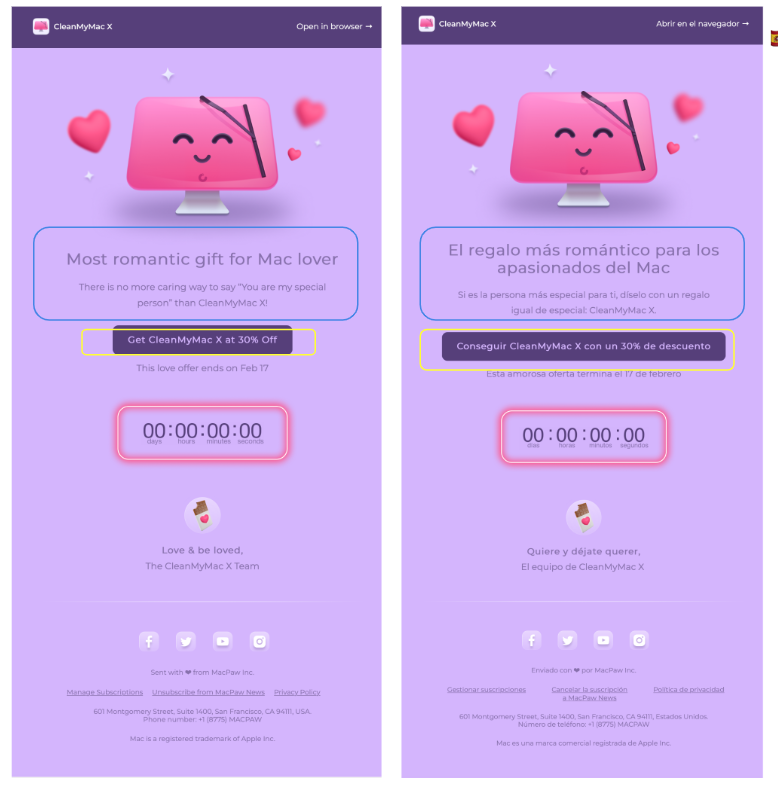
Limited Text = Relatively Easy
Short email content is generally easier to localize. With limited copy, the translation process is quicker and there's less risk of misinterpretation.
Live Text Design Usually Holds Up
Most translations will fit into the same number of lines as the original live text meaning your email design typically won’t break. You might see small shifts, but nothing that drastically affects the overall structure or visual appeal.
Watch Out for Button Text
One common exception is buttons. Non-standard CTAs or longer translated phrases can stretch buttons and disrupt alignment. To avoid this, design with flexible padding or allow for variable text length within your templates.
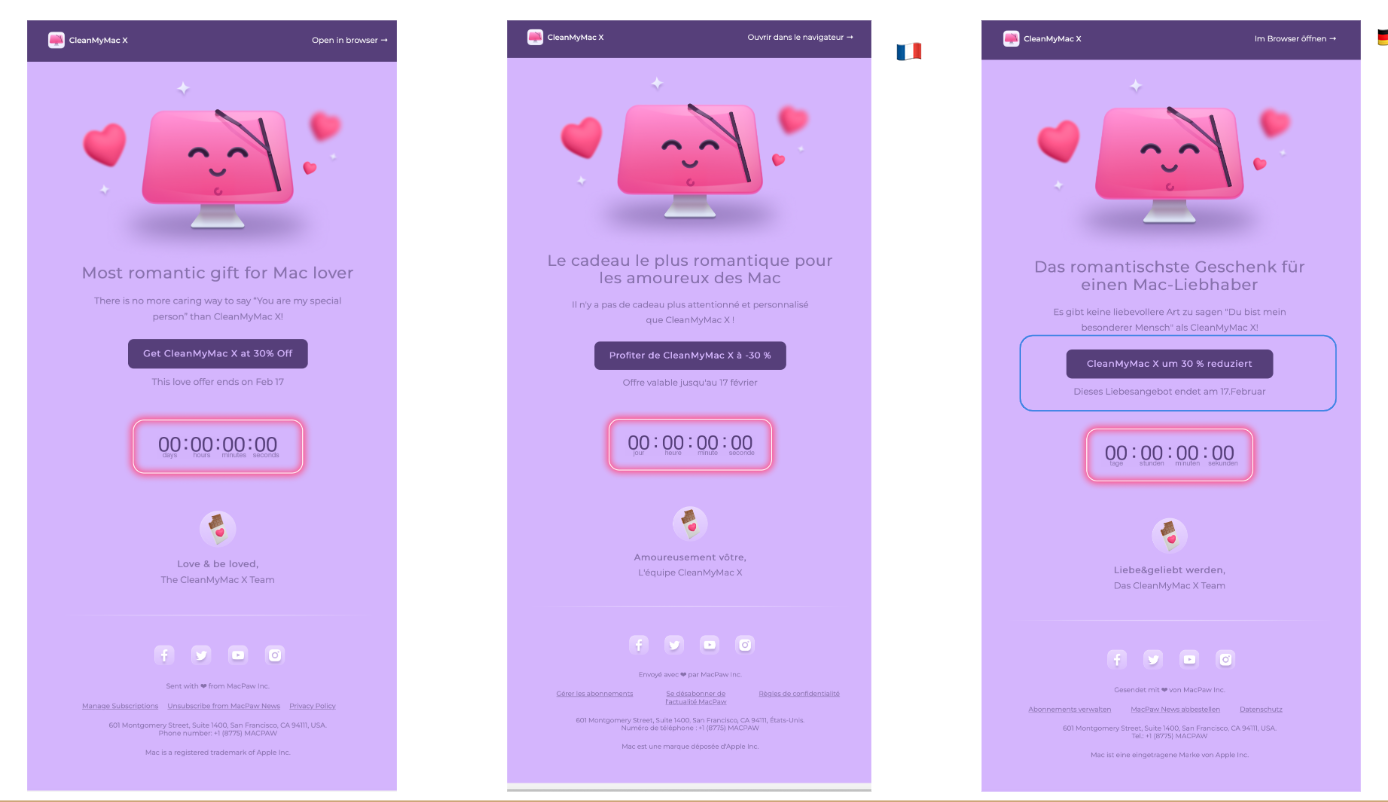
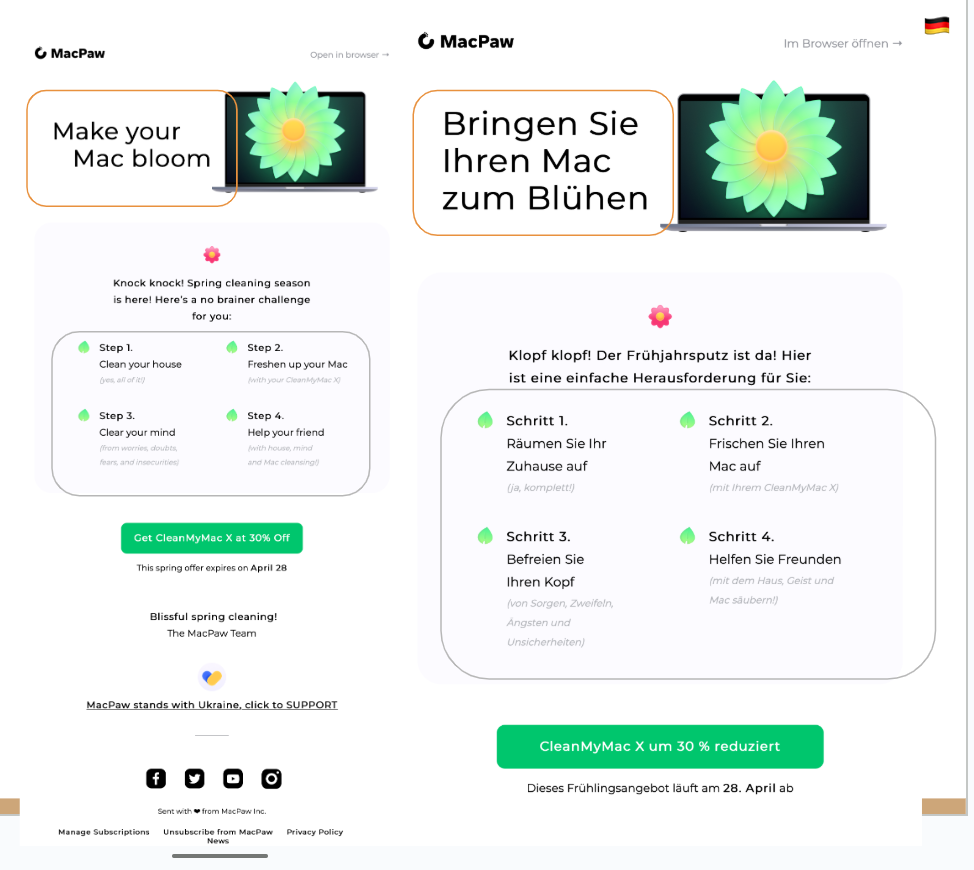
More Text = More Complexity
As the amount of text increases, so does the complexity of localization. Longer emails introduce more opportunities for nuance, cultural references, and formatting issues—all of which require careful attention during translation.
Short Titles Are Tricky
Catchy, concise subject lines or headers are often difficult to translate effectively. What works in one language may lose impact or require more words in another, potentially throwing off your design or messaging.
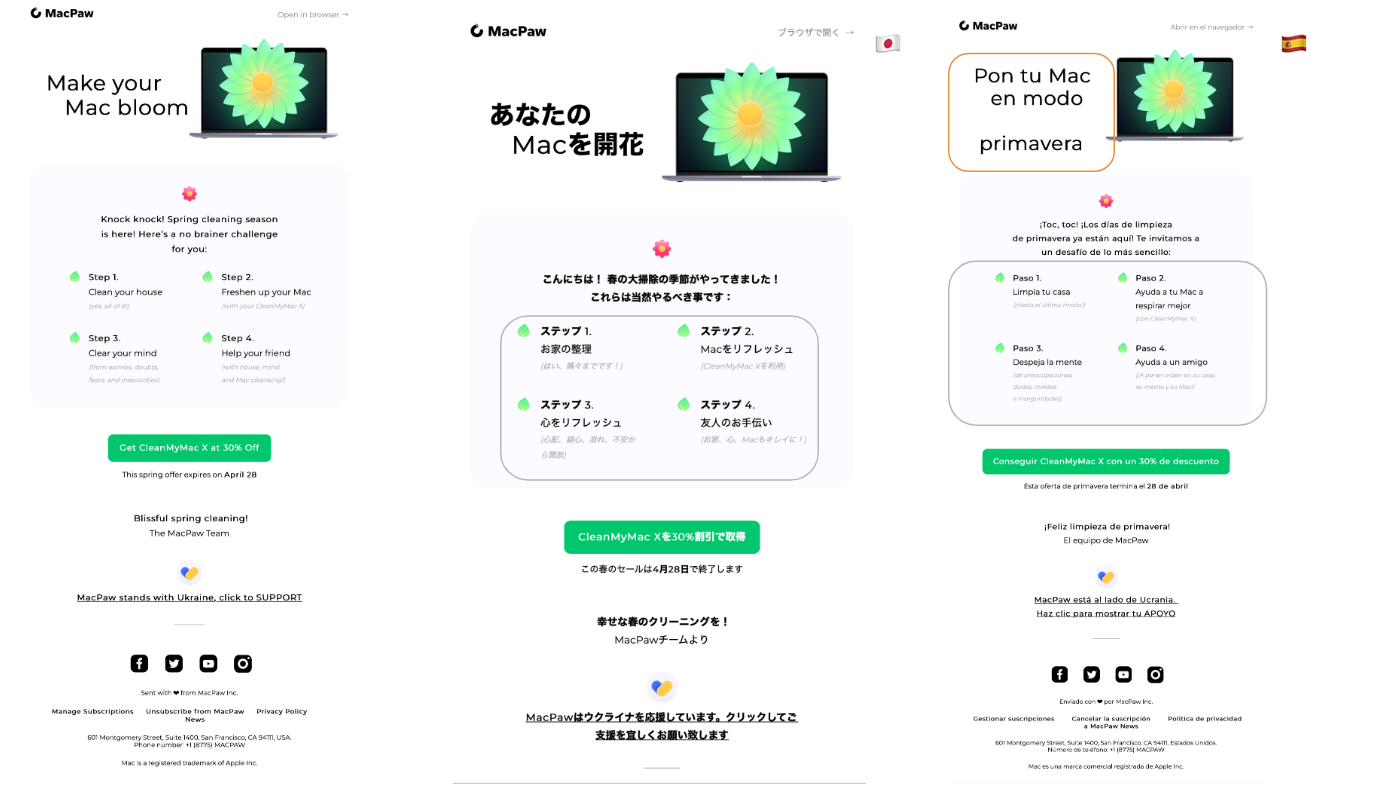
Bullets Don’t Always Stay Short
Bullet points that are crisp and punchy in English often expand in translation. Condensing meaning into just a few words is much harder across languages, and you may need to allow more space or adjust formatting to maintain clarity.
Quick fixes for clean design
These small adjustments can help preserve both design and readability across languages:
- Use non-breaking spaces to keep dates, numbers, or phrases from splitting awkwardly across lines.
- Adjust padding to accommodate text expansion or contraction without breaking the layout.
- Watch the button-to-text ratio—longer translations can make buttons look unbalanced or cramped.
- Check in with your designers early to make sure the layout is flexible enough to adapt to different languages.
- Be careful with image-based banners that contain text; translating those requires design edits, not just copy changes.
- Mind the spacing—extra or inconsistent spaces can appear more visibly in some languages and may affect alignment.
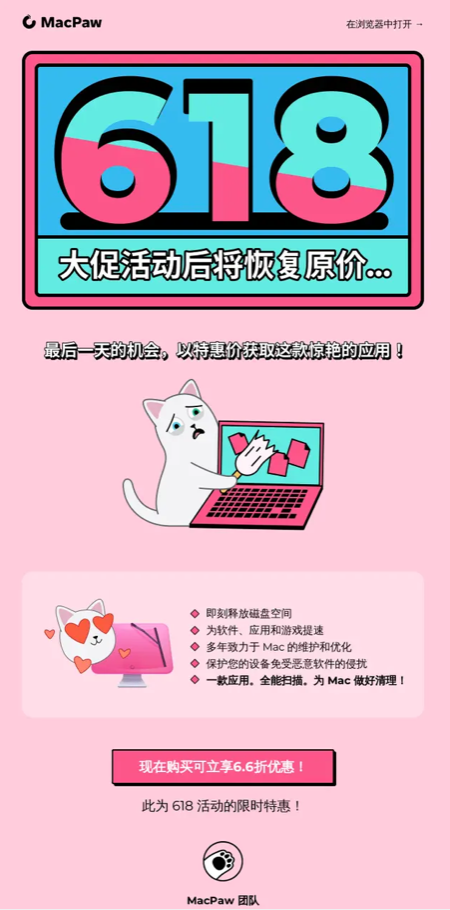
From localization to localization strategy
Once you’ve mastered the basics, it’s time to take localization a step further. Think beyond the inbox, about the user’s whole lifecycle experience. Localize your CTA landing pages too, so the experience feels seamless from start to finish. Don’t only keep it to translations. If you know a particular audience engages well with localized emails, maybe it makes sense to make a campaign specific to them? Be it the 618 shopping festival in China, or the anime festival in Japan… The world is far and varied and there are lots of interesting region specific events that can inspire you and your team. All you have to do is dip your toe in international waters.
